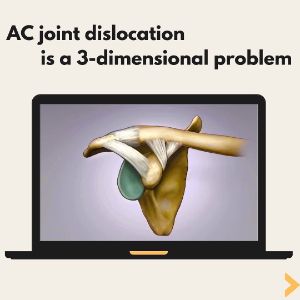A labrum tear is a common injury that can occur in the shoulder joint. The labrum is a piece of cartilage that provides stability and cushioning in the glenohumeral shoulder joint. When the labrum tears, it can cause pain, weakness, and a decreased range of motion. If you suspect you may have a labrum tear, it is essential to understand the symptoms and seek medical evaluation for a proper diagnosis and treatment. Here are indications that you have a labrum tear.
Shoulder Pain
Pain is the most common and noticeable symptom of a labrum tear. The pain is often deep within the joint and can be sharp or aching. It may occur suddenly, especially during overhead movements, like throwing a baseball or lifting weights.
Catching or Locking Sensation
Some individuals with labrum tears report a sensation of the joint catching or locking. This feeling may be due to a torn labrum getting pinched or caught between the joint surfaces. It can be accompanied by pain and a sudden inability to move the shoulder joint smoothly.
Clicking or Popping
Labral tears can sometimes cause a clicking or popping sound within the shoulder. This noise may occur when you move the joint or during specific movements. While not always present, it can be a sign of labral damage.
Weakness
A labrum tear can lead to muscle weakness in the affected shoulder. For instance, if you have a labral tear in your shoulder joint, you may notice weakness when lifting or carrying objects overhead.
Decreased Range of Motion
Labrum tears can restrict your joint’s range of motion. You might find it challenging to perform certain movements or stretches that were previously easy. This limitation in motion is often accompanied by pain.
Instability
In some cases, labral tears can lead to joint instability. You may feel like your shoulder is loose or more prone to dislocation. This sensation of instability can be unsettling and may lead to further injury if not addressed.
Gradual Onset of Symptoms
While some labrum tears result from acute injuries, others develop gradually over time due to repetitive use or wear and tear. You may notice a gradual increase in pain and discomfort, especially with specific activities.
Discomfort During Rest
Labral tears can cause discomfort even when you’re at rest. You might experience pain when lying on the affected side, which can disrupt your sleep patterns.
It’s important to note that the severity of symptoms can vary from person to person and may depend on the extent and location of the labral tear. Additionally, labral tears can sometimes be challenging to diagnose based solely on symptoms, as they may overlap with other shoulder conditions. Therefore, if you suspect a labrum tear, it is crucial to consult an orthopedic specialist, particularly a shoulder specialist like Dr. Steven Struhl.
To confirm a labrum tear, Dr. Struhl may perform physical examinations, order imaging tests (such as MRI or CT scans), and possibly recommend arthroscopic surgery for a more detailed evaluation and repair.
Early diagnosis and appropriate treatment are key to preventing further joint damage and improving your quality of life. Treatment options may include rest, physical therapy, anti-inflammatory medications, and, in some cases, surgical repair. If you suspect a labrum tear in your shoulder, contact the office of Steven Struhl, MD – AC Joint Separation – we have offices in NYC and Westchester, NY, for your convenience.
Posted on behalf of Steven Struhl MD





